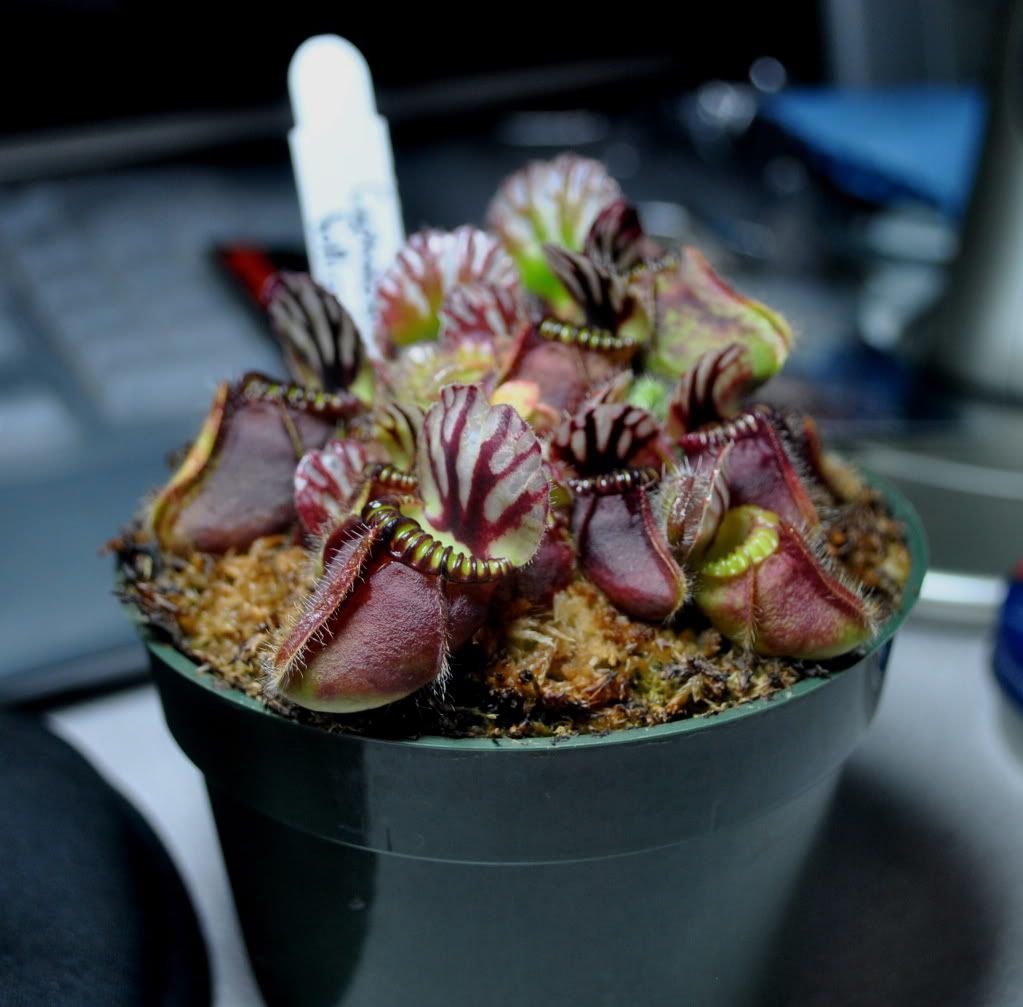I am sad to hear about your casualties and downfalls with this species of plant, which actually, given the appropriate conditions is a fairly simple plant to grow, it also disappoints me to see how little feedback was given to help possibly save your plants, so here are a few pointers for you, should you give this plant another try...
1st.
Air circulation is one of the most crucial aspects in growing these plants, as they are very susceptible to various types of fungal infection, from powdery white mildew, to crown or root rot. Making sure the plant is near a fan in a tank, or in a more open area where air will not stagnate, is your best bet.
2nd.
medium is also very important.
Generally a well drained and airy mix is what you would like to have for these plants, in the range of peat/sand/perlite (50/25/25) or peat/sand (50/50 or in that range, possibly leaning at more sand in the mix)
3rd.
watering, this is something many people over-do with these plants.
Cephalotus need a bit of a dry out period in between waterings in my experience, and I never personally set them in a tray. I use a top dressing of sphagnum moss in my plants mixtures to give me an idea as to when my plants need to be watered, when the moss begins to dry, its generally getting close to watering time (which for me is once or twice a week)
4th.
lighting, though not as crucial as some other aspects in the care for these plants, still plays a strong roll, as with too little light, you get weak etiolated plants. The stronger the light, the smaller your traps will be in my experience, though this does not always hold true as it is also rather dependent on other conditions and the clone of the plant you are growing,
Also take in mind that more light does not necessarily mean more color, as it seems temperatures also play a vital role in this.
For lighting indoors, i use 6x 24" fluorescent T12 tubes, though T8s will work as well, and you likely dont need this many lights either.
Outdoor lighting, if the plant is relatively small or was grown indoors and looks a bit weak, start out with partial shade and work your way up to a more sunny position, not necessarily full sun however.
5th.
Temperature seems to play a roll in the plants health as well, much like highland or intermediate Nepenthes, the plants seem to appreciate a slight temperature drop at night. Come winter time, as it gets cooler in many regions of the world and light decreases, you will notice the plant will slow down pitcher production and begin to produce its non-carnivorous leaves.
lower temperatures also seem to play a key role in coloration of the plants.
The cooler it gets, the darker the pitchers seem to get.
So best of luck, should you give these plants another shot, as they are truly fascinating plants...
On another note, you can have your conditions set to ideal for one plant, and have another completely hate it. why this is, i am not sure....even the exact same clone may fail to grow while the other plant completely flourishes. Then there is the dreaded Cephalotus "Sudden Death Syndrome" which for no reason what so ever, your plant decides to just say "Hey, i dont like life anymore, bye" and just die.... Again, no one knows why as far as i can tell....
Now i also like to feed my Cephalotus with betta fish pellets, as this really seems to up the growth and vigour in my experience with this species.
Here is one of my Cephalotus, this one is an unnamed clone and when i received it in August last year, was potted in a 2.75" pot, and was much much smaller than it is now.
Here it is the day i received it

and here it is tonight
